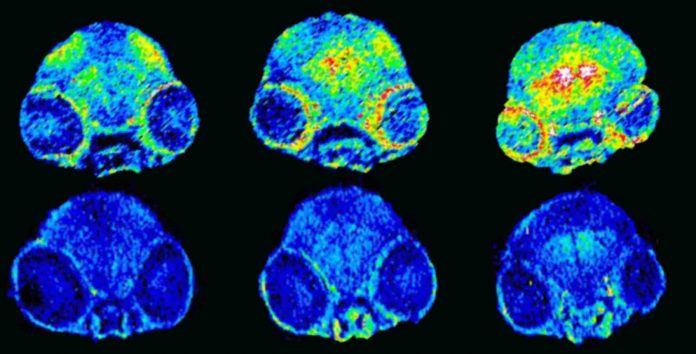Alzheimer’s disease is characterized by the presence of amyloid plaques in the patient’s brain. These plaques sequester copper, and contain approximately five times as much as a healthy brain.
Two CNRS scientists from the Coordination Chemistry Laboratory recently developed, with their colleagues from the Guangdong University of Technology and Shenzhen University (China), a molecule that regulates the circulation of copper in the brain.
The molecule extracts the copper trapped in amyloid plaques, and reintroduces it in the brain’s normal enzymatic circuit (which needs copper to function). Administered orally to an Alzheimer’s mouse model, this molecule inhibits memory loss among sick mice.
These results, which were published in ACS Chemical Neuroscience, open a new therapeutic avenue that could prove effective in early stages of Alzheimer’s disease among humans. The scientists are now seeking a pharmaceutical partner to develop preclinical trials for this drug candidate.
































